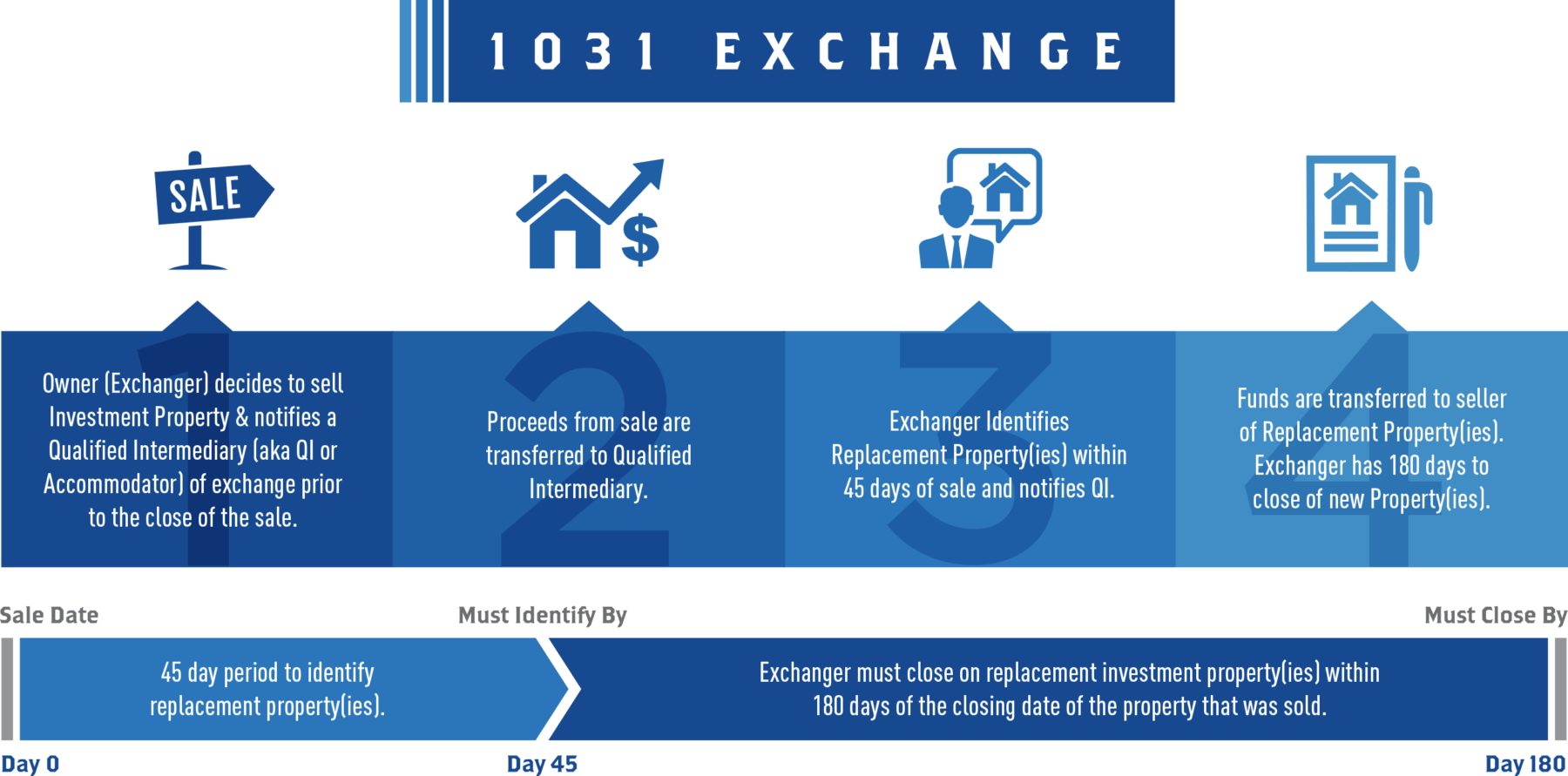Table of Contents
What Is A 1031 Exchange – 1031 Exchange Rules 2021 is a property term that describes the swap in financial investment residential property in order to delay tax obligations of capital gains. The name is gotten from Section 1031 of the IRS code, which describes investors, realtors, and also title firms.
There are lots of vibrant parts within Section 1031 that vital to be recognized before you try to use them. Exchange can be done only for “like-kind” residential or commercial properties as well as the uses are restricted for vacation residential or commercial properties by Internal Revenue Service.
What Are 1031 Exchange Rules?
As discussed in prior, 1031 exchange is an act of swapping investment properties. It is likewise frequently described as Starker or like-kind exchange. The majority of swaps are applicable for taxes as sales, but you may defer tax or provided with restricted tax obligation if you can fulfill the 1031 exchange’s demands.
As the result, according to IRS, you will certainly be able to modify the investment forms without the financial investment being recognized as capital gain or being cashed out. This lets the financial investment keep on being delayed from tax. 1031 is generally can be provided for boundless quantities of times. You would certainly be capable to topple your real estate financial investment’s gain from one to one more, and then to one more, and afterwards to an additional. You may not gain profit from every single swap, yet you will certainly stay clear of tax obligation up until the investment is offered, even if it takes years later on. If everything works out as the system is planned to be, then you only need to pay a solitary tax obligation at a 15% or 20% price of capital gains in long term, relies on your earnings. If you’re categorized as taxpayers with a lower income course, it can even be 0%.
The 1031 Exchange Rules 2021 is utilized for the residential or commercial property of service as well as investment only. Nonetheless, it could be able to put on the major home property under some problems. It is also in fact feasible to use 1031 for holiday properties, but the chance is so reduced currently contrasted to some times ago.
What Are Types of 1031 Exchange Rules?
Simultaneous
Simultaneous exchange occurs is the like-kind exchange occurs within the very same day. This is the initial 1031 exchange type until the legislation of taxes is upgraded to allow the possibility for various other types.
Delayed
Delayed exchange happens if you market the residential or commercial property, get cash, as well as acquisition another property by delay. The delay may occur for a solitary day to a few months before you finally acquire the replacement residential property. If the substitute property is not acquired within the IRS’ determined amount of time, after that you need to pay your residential property sale’s capital gain.
Improvement
Known as construction exchange, Improvement exchange occurs when you desire to use tax-deferred cash to boost the substitute property. Nevertheless, the money is maintained by the center man.
Reverse
Reverse exchange occurs if you buy the residential property initially, and after that exchange it later. In this scenario, you require to buy the substitute residential or commercial property first then arrange the second residential or commercial property’s sale. This sort of exchange is not actually common to be used, because the deals require to be totally in money.
Delayed Exchanges and Timing Rules
There are 2 timing rules that fundamentals and also have to be observed throughout the Delayed exchanges:
45-Day Rule
The rule is associated with the visit of the replacement residential property. The middle male must obtain the money once the residential or commercial property deal happens. You should not obtain the cash as it’ll damage the 1031 exchange.
Within the span of 45 days after the residential property is sold, the substitute residential property have to be assigned to the middle man, and also the residential or commercial property that you want to get need to be defined. According to Internal Revenue Service, you may mark up to three residential or commercial properties, as long as you neighbor to one of the 3. If they fulfill with specific assessment tests, it’s also feasible to mark beyond three properties.
180-Day Rule
The timing rule relates to closing in the context of a Delayed exchange. The new property needs to be enclosed the span of 180 days after the old is sold.
IRC Section 1031 Fact Sheet PDF
 Loading...
Loading...
HOPE THIS POST HELPS YOU!
IF YOU ARE STILL HAVING PROBLEM OR PERPLEXED ABOUT [KEYWORD], YOU MAY CONSULT WITH A TAX EXPERT THROUGH THIS LINK OR WITH A FINANCE EXPERT THROUGH THE CHAT BOX RIGHT BELOW.
